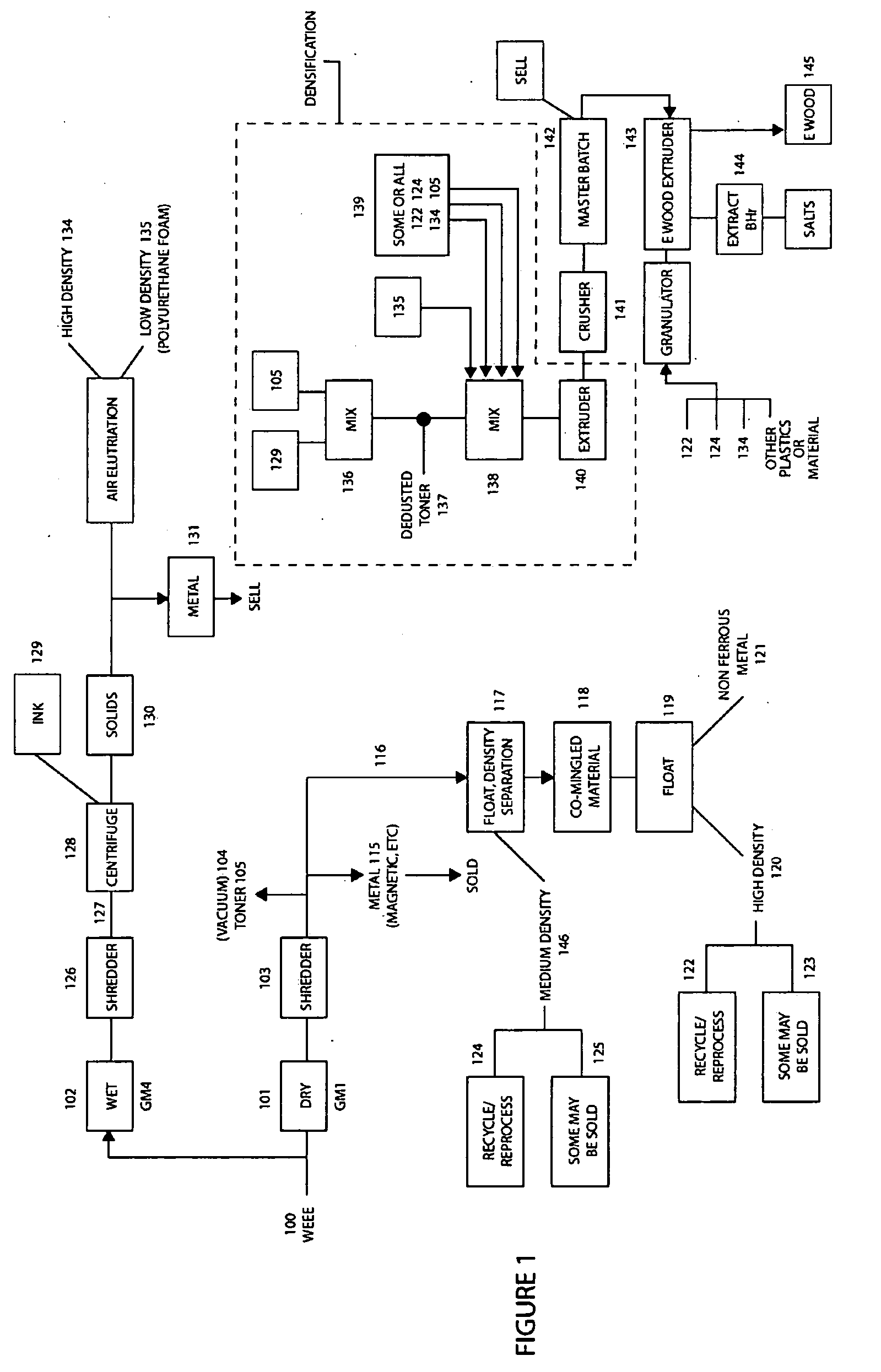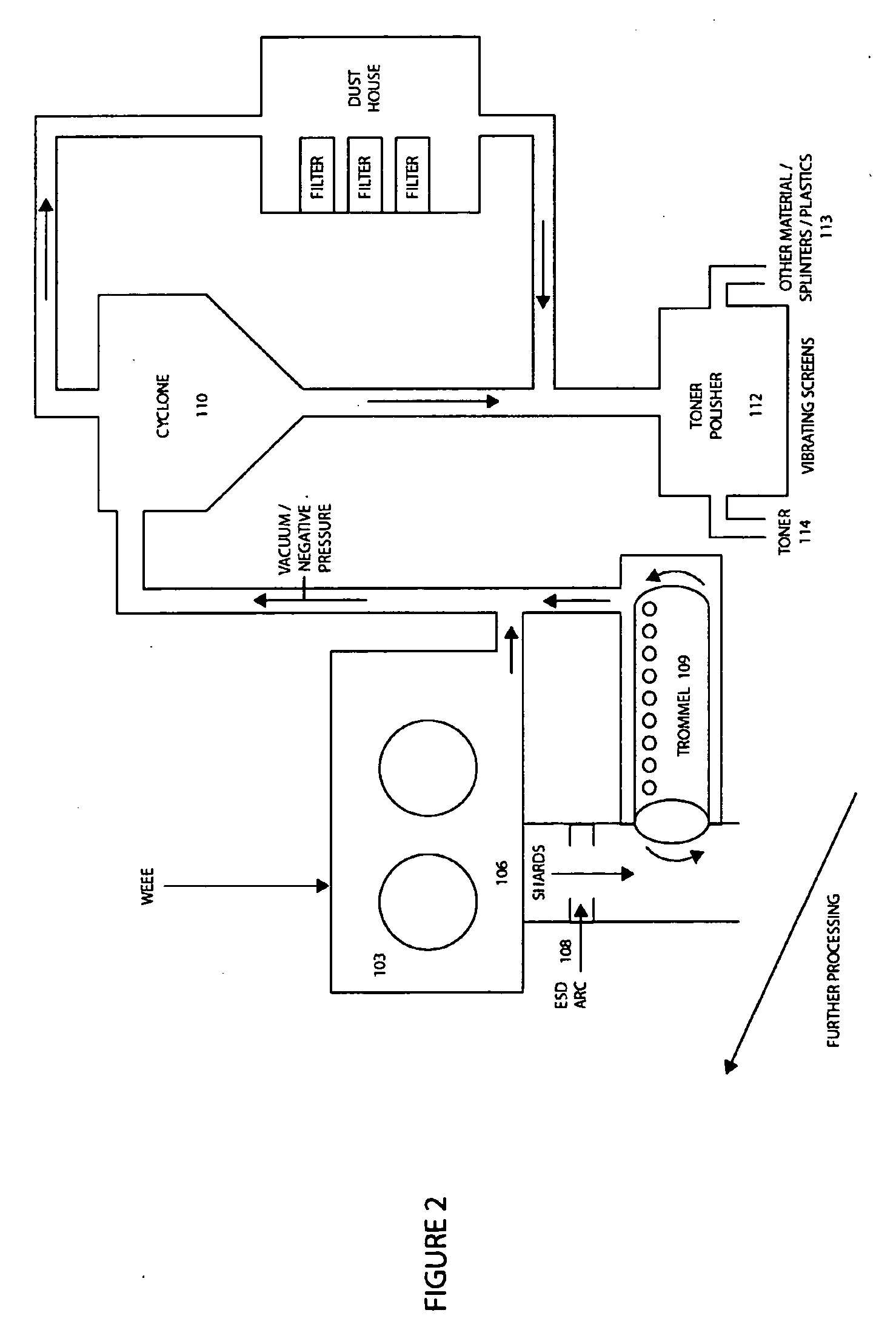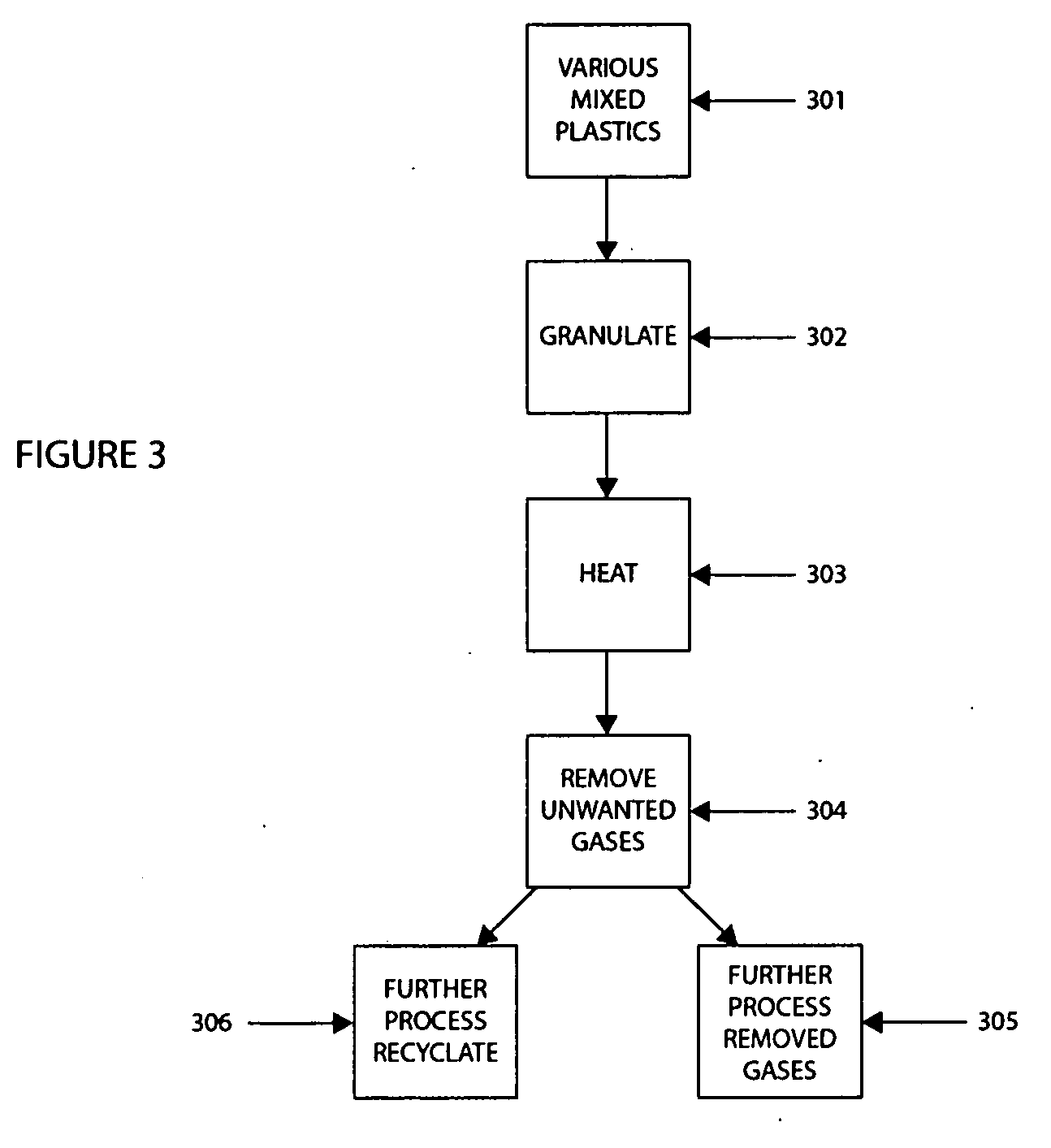Method of recycling mixed streams of ewaste (weee)
- Summary
- Abstract
- Description
- Claims
- Application Information
AI Technical Summary
Benefits of technology
Problems solved by technology
Method used
Image
Examples
Embodiment Construction
[0062] One aspect of the present invention is directed to the overall processing of WEEE in a manner that substantially no material is required to be disposed of in landfill. In accordance with this aspect, the WEEE material is processed, for example by reducing the material to flakes, then the flaked material is passed through a number of separation stations. In one station, metal is substantially removed, in another, glass is substantially removed.
[0063] An additive material (which we refer to as masterbatch) is created in one aspect of invention, using some of the elements of the WEEE which are separated out in the wet process and the dry process. The additive material is, in one form, a colour concentrate. The additive material may be sold as an additive to be included in products made from recycled or other materials. The additive material is preferably combined with other plastics and material obtained from the WEEE to be recycled and serves to bind otherwise incompatible pla...
PUM
| Property | Measurement | Unit |
|---|---|---|
| Fraction | aaaaa | aaaaa |
| Fraction | aaaaa | aaaaa |
| Fraction | aaaaa | aaaaa |
Abstract
Description
Claims
Application Information
 Login to View More
Login to View More - R&D
- Intellectual Property
- Life Sciences
- Materials
- Tech Scout
- Unparalleled Data Quality
- Higher Quality Content
- 60% Fewer Hallucinations
Browse by: Latest US Patents, China's latest patents, Technical Efficacy Thesaurus, Application Domain, Technology Topic, Popular Technical Reports.
© 2025 PatSnap. All rights reserved.Legal|Privacy policy|Modern Slavery Act Transparency Statement|Sitemap|About US| Contact US: help@patsnap.com



